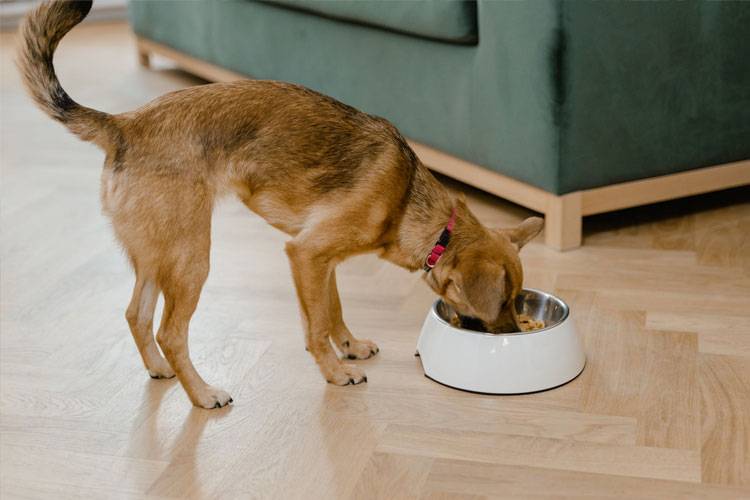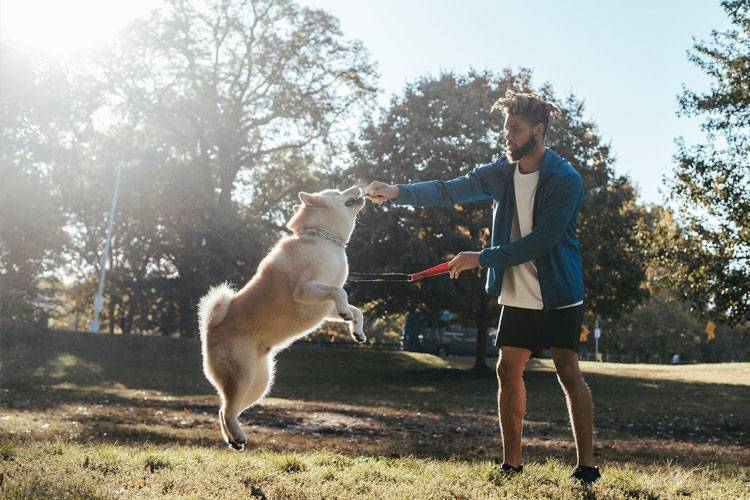
Photo by Helena Lopes from Pexels
Many dogs need special care during winter as they’re at greater risk for frostbite and hypothermia. You’ll also want to ensure they’re well-fed and have enough exercise. Here are some simple care tips to help you prevent health problems in your pup this winter.
1. Be Aware of the Cold
Contents and Quick Navigation
An important tip for winter care is to be aware of the cold. When it starts to get cold, your dog will likely spend most of its time indoors or outside in the cold. This means he’ll need protection against frostbite and hypothermia.
Hypothermia is when your dog’s body temperature drops below 95 degrees Fahrenheit if he’s out in the snow too long without appropriate clothing. It can also happen if he’s not well insulated or has access to heat indoors. Frostbite is when parts of your dog’s skin freeze because they’re exposed to very cold temperatures for an extended period. The result is dry, leathery-feeling skin that can easily tear or crack.
2. Get Them a Warm Coat
One of the most important things to do for your dog this winter is to get them a warm dog hoodie. This will protect them from the cold and wet weather. The best option is an easy-to-wear coat with a hood, which you can buy at any pet store.
3. Give Them Enough Food
One of the most important things to keep your dog healthy and happy is to have enough food. The winter season is so cold, so it’s common for dogs to feel hungry more often than usual. Make sure you’re feeding them enough and not just giving them scraps.

Photo by MART PRODUCTION from Pexels
4. Keep Their Paws Dry and Clean
Your dog’s paws are their most sensitive body part. When it is cold outside, they are more prone to frostbite, which can cause permanent damage to your dog’s paws. To prevent this, make sure you protect your dog’s paws with booties or socks, especially on the walk or in the snow.
When cleaning your pup’s paws, use warm water and dish soap to wash away any dirt off their paw pads. Rinse them thoroughly and dry them with a towel. After drying, put some lotion on their paw pads to avoid getting dry in the winter air.
5. Take Shorter Walks in Cold Weather
When taking walks in more extreme or colder temperatures, you will need to take shorter walks. This is because the cold winter air will hurt your dog’s paws, and it could cause frostbite on their paws.
Another good tip for walking in the winter is wearing booties or socks when going outside. This can help keep your dog’s feet warm by blocking the cold air.
6. Keep Your Pooch Safe From Frostbite
Dogs are more susceptible to cold than people, so they need more protection during the winter months. The best way to do this is by providing them with a warm place to sleep and dry bedding.
Additionally, you should consider covering their feet with socks or booties when they go outside. These items will help protect your dog’s paws from frostbite. It’s also important to keep them out of the wind as much as possible and make sure they’re not around any salt or de-icing chemicals on frozen sidewalks or streets.
7. Help Them Exercise
If you’re not already, make sure your dog gets enough exercise and is well fed throughout the winter.

Photo by Zen Chung from Pexels
You’ll want to ensure he’s getting plenty of food and water to help him maintain his energy levels. It would help increase your dog’s caloric intake to keep up with the cold weather.
8. Provide a Warm Place for Your Dog to Sleep
You may not realize it, but the ground can freeze and become very cold for your dog. The best way to keep your pup warm is to provide them with a warm place to sleep. That includes providing food and water and somewhere comfortable to rest.
Make sure they have a heated bed or one with a heating pad underneath (or both!) to keep them warm at night.
9. Veterinarian Visits are Important During Cold Weather
It’s important to have a veterinarian that you trust. If your dog does start to have any signs of frostbite or hypothermia, they need immediate medical attention.
10. Check for sores, bumps, or other skin irritations
It’s essential to check your dog for any skin irritations. Even if your dog seems healthy, skin irritations can be caused by an underlying medical condition, like fleas or mange.
If you notice that there are red bumps all over your dog’s body, they probably have mange. On the other hand, if there are small red bumps on the head and face, it could be due to fleas.

Photo by Julian Paolo Dayag from Pexels
Mange is a common problem among many different breeds of dogs, including hounds, Labrador retrievers, German shepherds, and dachshunds. It’s caused by mites that burrow under your dog’s skin and cause intense itching. If left untreated for too long, the mites will spread to its organs and cause death.
Fleas are another common issue this time of year. You should see black specks on your dog’s coat if they have fleas. Flea collars effectively kill these pests since they need blood from a human host to reproduce. See below for more tips on treating flea infestations.
11. Watch for signs of illness or injury
One of the most important things you can do for your dog this winter is to keep an eye out for injury or illness. If they start to shiver, have diarrhea, feel weak, or have trouble breathing, these are all signs that they may need medical treatment.
Conclusion
Dogs need a lot of love and attention during the winter season, so don’t forget to care for your four-legged friend. It’s essential to take care of your pup by keeping them warm, giving them a good dinner, and ensuring they have a clean place to go to the bathroom. In the end, it’s all for the best. Your dog will be happy to spend time with you, and you’ll be glad to get the extra cuddles.
Mike is the proud owner of a 7-year-old Cockapoo named Luna. He loves to share stories, tips and information about owning a Cockapoo. With over7 years of experience as an owner, Mike is passionate about helping others own and care for their dog.
Top 5 Popular Cockapoo Products
